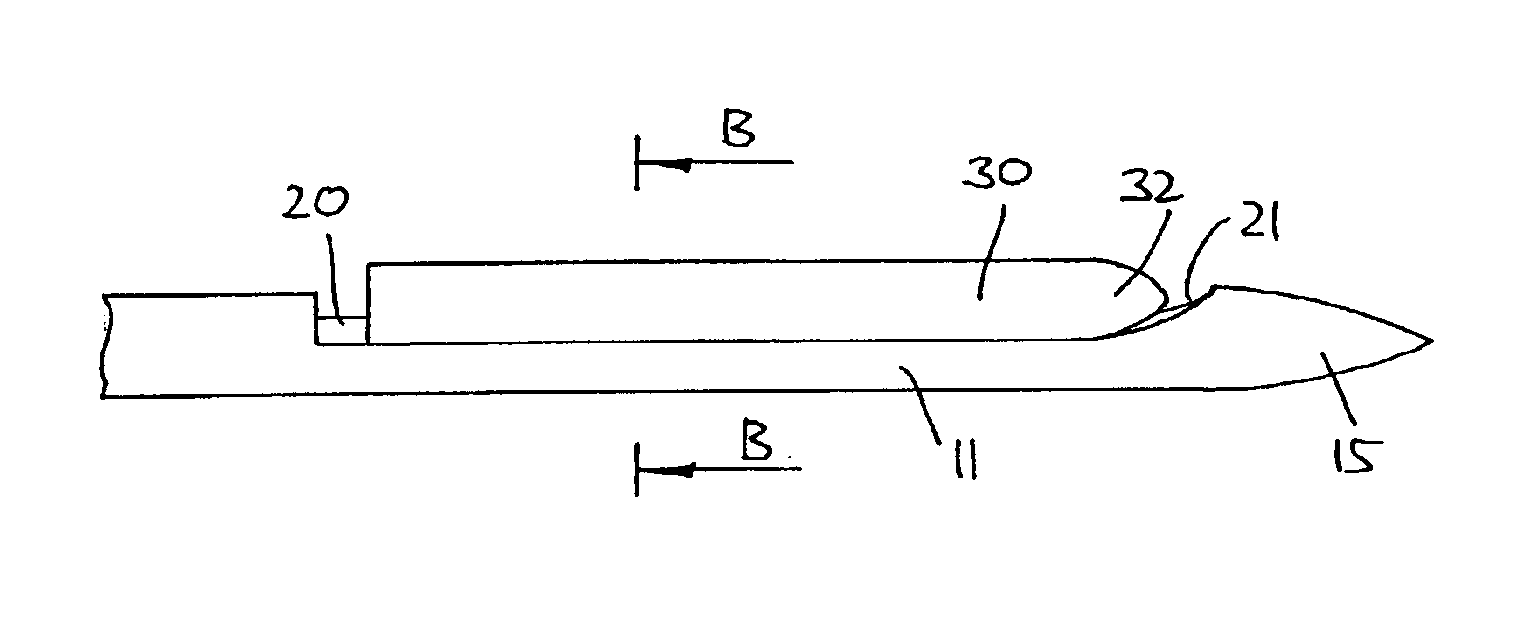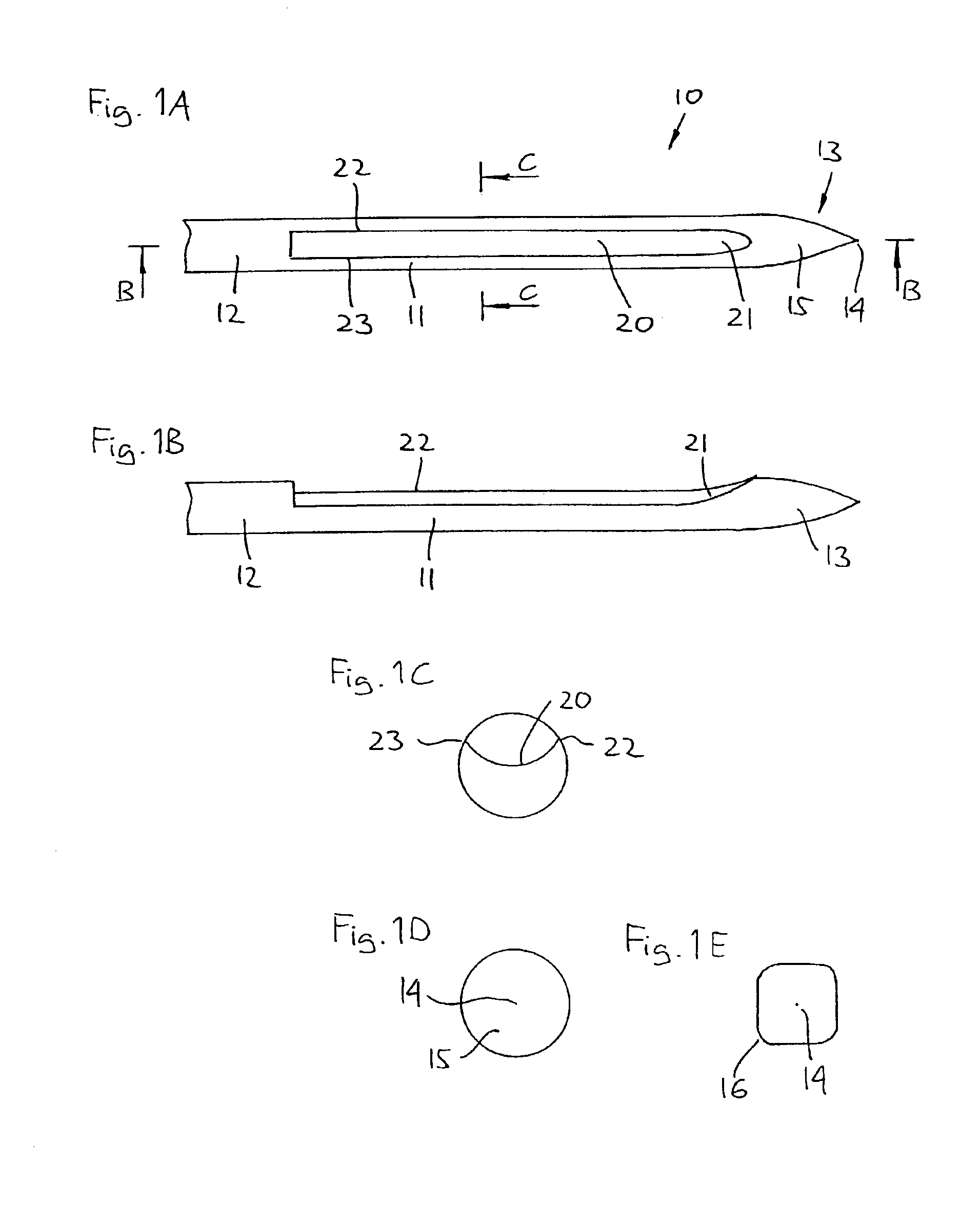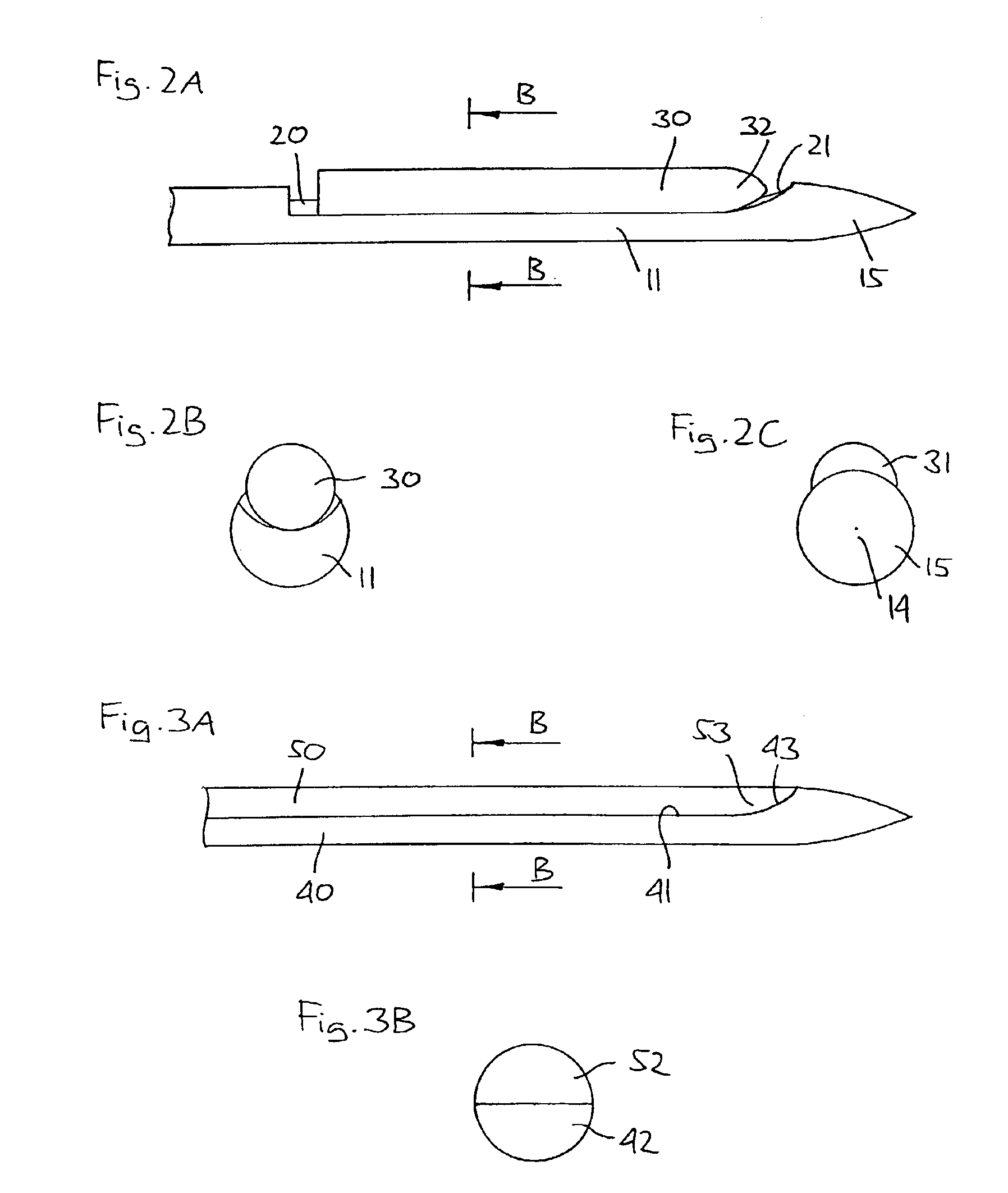Atraumatic insertion of a subcutaneous device
- Summary
- Abstract
- Description
- Claims
- Application Information
AI Technical Summary
Benefits of technology
Problems solved by technology
Method used
Image
Examples
Embodiment Construction
[0060]It should be emphasized that in the following disclosure of the invention, features and details which are not considered necessary for understanding the principles of the present invention has been largely omitted, for example, the sensor device is shown merely schematically, the attachment to a mounting base or similar structure or the provision of sensor electrodes and electric contact means being omitted.
[0061]FIGS. 1A-1E shows an embodiment of the invention in accordance with a first aspect. More specifically an insertion needle 10 comprises an oblong needle body 11 having a proximal portion 12 and a distal end portion 13, the distal end portion having a generally conical shape providing a pointed distal tip 14 and a distally facing smooth surface 15, thereby comprising no structures which may serve to cut tissue when the insertion needle is introduced subcutaneously. As appears from FIG. 1D the conical end portion completely defines the distal surface, the needle body com...
PUM
 Login to View More
Login to View More Abstract
Description
Claims
Application Information
 Login to View More
Login to View More - R&D
- Intellectual Property
- Life Sciences
- Materials
- Tech Scout
- Unparalleled Data Quality
- Higher Quality Content
- 60% Fewer Hallucinations
Browse by: Latest US Patents, China's latest patents, Technical Efficacy Thesaurus, Application Domain, Technology Topic, Popular Technical Reports.
© 2025 PatSnap. All rights reserved.Legal|Privacy policy|Modern Slavery Act Transparency Statement|Sitemap|About US| Contact US: help@patsnap.com



